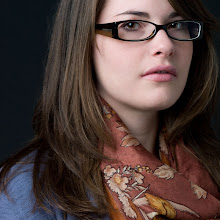

Anna Gaskell and the Theatrics of Girlhood: Where Fantasy and Fright Meet.
Anna Gaskell’s work is beautiful by any aesthetic standard. Moving light, lovely little ladies and fairy tale forest scenes comprise the majority of her carefully constructed scenes. Fashion informs her shooting style and her subjects are definitely models torn from the pages of Teen Vogue. The women wear fetishized garments to carefully construct a world we all recognize from our now distant childhood –– her images are the making of a fairytale.
But the work turns us around. The faces aren’t happy. The poses aren’t serene. Everything is set up for perfection, but the moment doesn’t strike and the mood is left in limbo, creating an alternative fairy tale where the girls show their teeth, their slightly deranged eyes and their softly violent intimacy.
While Gaskell’s images might not be the perfect version of what a little girl should be, these slightly off kilter representations might be just what every little girl needs to look up to. Nancy Friday in her book The Power of Beauty writes,
"Still close to purity of emotion, children recognize in their bones exactly what the wretched stepsisters feel toward the more beautiful Cinderella, having felt the same murderous cruelty that very day toward their own bother or sister, whose golden curls, once again, won the last cookie on the plate..... Fairy tales divert children from these overly harsh accusations by giving them events and characters who represent and play out everything the child is feeling; the child no longer has to internalize the bad feelings, turn them against himself." pg 95
So perhaps Gaskell is trying to relieve us of the pressure of a perfect childhood or consequently, a perfect adulthood. Perhaps by showing us the uglier side of these beautiful little girls she is say, ‘All is not right. Everyone is not happy. But perhaps we don’t need to be.’O
On a more personal note: I enjoy Gaskell's work in relation to my own themes. I too am exploring the ways that childhood identity forms our adulthood mindset. I enjoy Gaskell's use of the unsettling, awkward and at times, violent moments that come through in the child's play and images. But throughout this their remains an undercurrent of perfection. The models are perfect looking and the images are highly aesthetisized in the way of fashion, again alluding to this higher beauty and power that stands out in images of glamour and fairy tale.




















